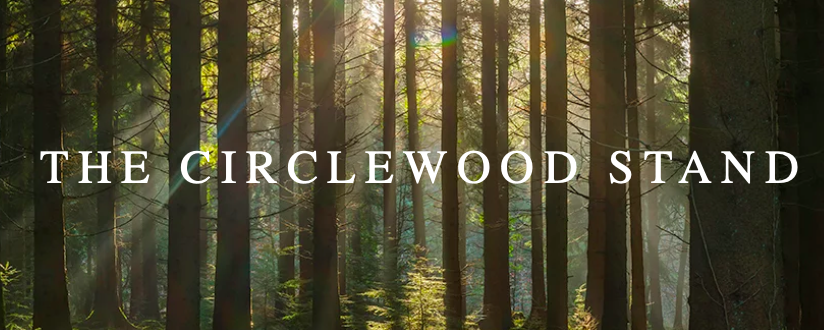In 2005, Qinhuangdao City, China was looking for a way to renew a riverside space beside the Tanghe River. It was overgrown, partially used as a garbage dump, and in danger of being eaten up by spreading urban development.

In spite of its issues, it was a rare green space in the city, something which many people considered worth saving. Even with eroding riverbanks, accumulating garbage, and difficult accessibility, the opportunities for interaction with green space, including the opportunity for swimming and fishing in the river, were considered important, even though the space had definite drawbacks.

An important ecological area, it contained native plants and wildlife habitat, but without a use plan in place, the riverside was degraded and eroded. With few outdoor spaces for recreation nearby, this was a good opportunity to provide that while maintaining the ecosystem.
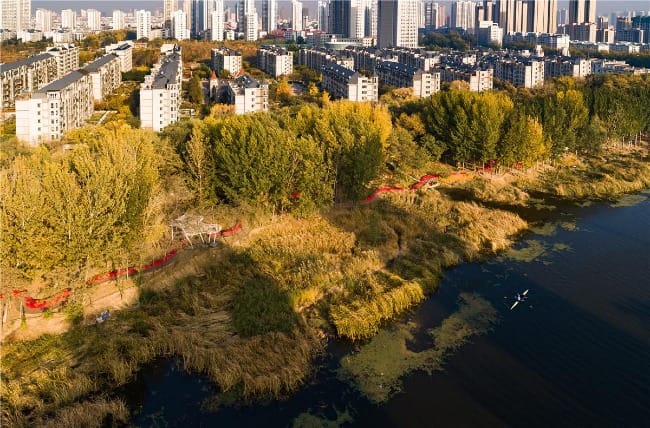
Different options for the area were considered, including paving it over with concrete. With its rapid urbanization, this has been a popular choice in China, with ecological systems being buried beneath concrete. (Between 2011 and 2013, China consumed 6.6 gigatons of concrete—more than the United States used in the entire 20th Century)[1]. Lower parts of this particular river had already been channeled, and this might have happened here as well. This would have meant replacing the natural river corridor with hard pavement and ornamental flower beds, which would have created a "cleaner" look than the dump space, but it also would have erased important environmental and recreation attributes of the space.
Architect Kongjian Yu of Turenscape ("tu"/land; "ren"/people) has a different vision for how to reimagine outdoor spaces. Working within his idea of a "Big Foot Revolution," Yu's goal is to work with nature rather than against it. Using the traditional bound feet of China as a metaphor for unnatural controlling structures that are used to conform natural systems into unhealthy arbitrary systems, Yu says:
Today we bind natural feet in the city with fashionable tiny high-heeled shoes, and we build a 500-year flood-control dike made of concrete to surround the city and keep it distant from the water. We build a fully controlled storm-water management system that does not allow the reinfiltration of water to the aquifer before being flushed into the ocean; we replace native “messy” and productive shrubs and crops with fancy flowers that bear no fruit, support no other species, and serve no function other than pleasing human beings; and we uproot hardy wild grasses and replace them with smooth ornamental lawns that consume tons of water. [2]
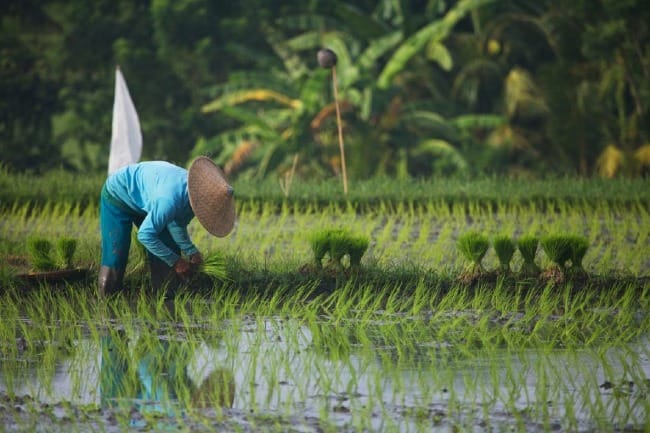
Having been raised on a traditional Chinese farm, Yu looks to rural agricultural systems for models of healthy integration of people and their environments. He believes that instead of walling out potentially destructive natural forces such as urban flooding, incorporating them into the system using farming experience and landscape techniques is a much better answer.
Within this framework, the Red Ribbon Park was established along the Tanghe riverside. The Red Ribbon is a 1650 foot (500 meter) long snaking structure which provides protection for the river and a place of coexistence for the people, plants, and animals sharing the space.
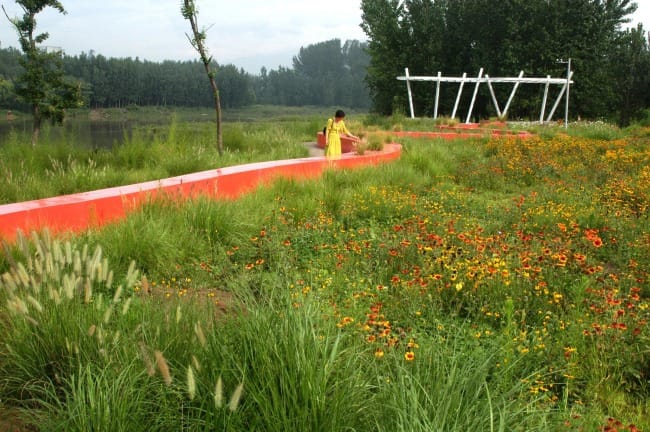
The first design priority for Tanghe Park was to protect the basic conditions of the water and vegetation. This meant careful protection of existing wetlands and vegetation. Biological berms were created to maintain the shape of the river and prevent its gradual erosion. The berms themselves were made from aquatic and wetland native plant species.
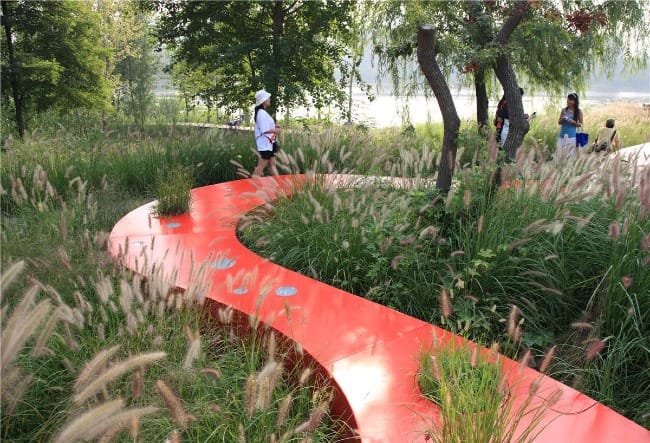
The red ribbon structure was given holes so the native plantings can grow through and with only native plant species and indigenous resources being used, the required ground maintenance is minimal. There are five nodes to the park, and five ecological zones, each with its own interpretive signs and plant identification. Each node has a covered area called a "cloud," with covered seating for those using the space.
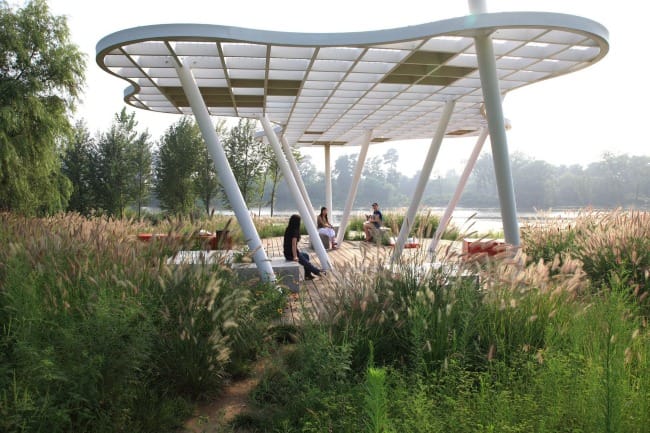
In one of the zones, there is a planting project where particular varieties of native mountain and field grasses, as well as native reeds, are planted, thus inviting participation from members of the community to learn about and care for the shared space.
The native wildlife has been taken into account by incorporating wildlife crossings, allowing animals to cross from one side of the structure to the other; this is especially important since the structure acts as a border between the river and trees, a transition area for animals that use both areas.
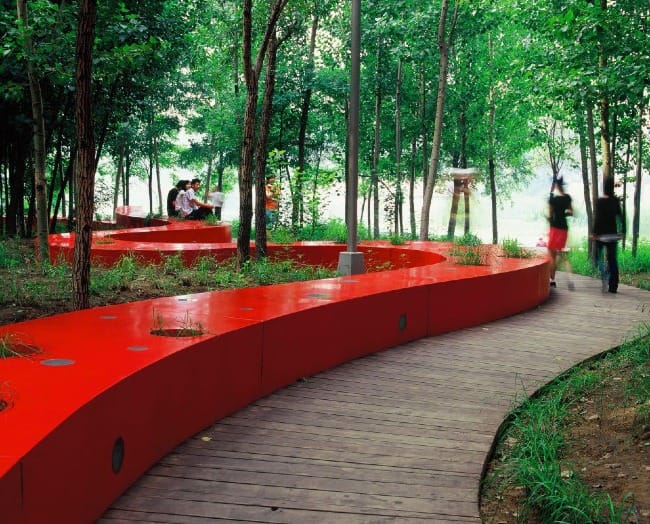
In addition to the environmental interpretation that encourages people to better understand the natural world around them, the ribbon provides seating, and the accompanying boardwalk beside it is used for walking, biking, and running. Bike paths and walking trails connect to a road system, making the area more accessible and secure.
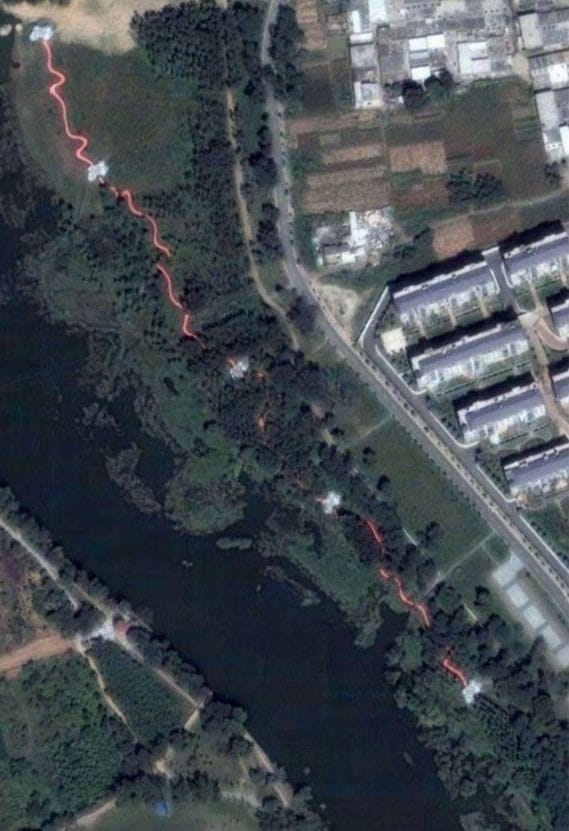
The design of the red ribbon honors Chinese tradition, as both the shape and color are significant in that culture. By basing the design on those traditional elements, Chinese values are recognized and incorporated into what might otherwise seem to be purely modern and disconnected from the culture. The lit benches, pictured below, bring to mind traditional Chinese paper lanterns, acting as another cultural anchor point in the design.

In practical terms, the gentle lighting from the bench provides a safer walkway and with the night sky reflected on its surface, it has become a popular spot for stargazing.
Aesthetically, it is amazing how one fairly thin strip of red "ribbon" is able to provide such a significant framework for the park. It delineates and defines, but unlike a larger, more elaborate structure, does not dominate. Visually, your eye goes first to the strip of red, but practically, the structure imposes itself minimally on the environment.
In accordance with the wishes of local residents, the natural site has been dramatically urbanized and modernized, but it has kept the ecosystem and natural characteristics of the site intact. It is a designed landscape that respects the river and plant life, allowing healthy interaction between city and nature, the man-made and the biological. In terms of the design world, it is minimum intervention, or the discipline of not taking more than we need, a principle that can be applied in our own lives as well.
Are there natural systems that you find difficult which you might be able to work with instead of against?
Are there ways in which you choose to think small instead of thinking large when it comes to your footprint on the ecosystem?
Louise
Feel free to contact me directly at info@circlewood.online.
[1] Gates, Bill. Have you hugged a pillar today? June 12, 2014. https://www.gatesnotes.com.
[2] Yu, Kingjian. The Big-Foot Revolution, February 13, 2011. https://www.turenscape.com.
Did you enjoy today's column? If so, consider joining The Circlewood Stand, the community of supporters that makes this journal possible. Click below to learn more.
